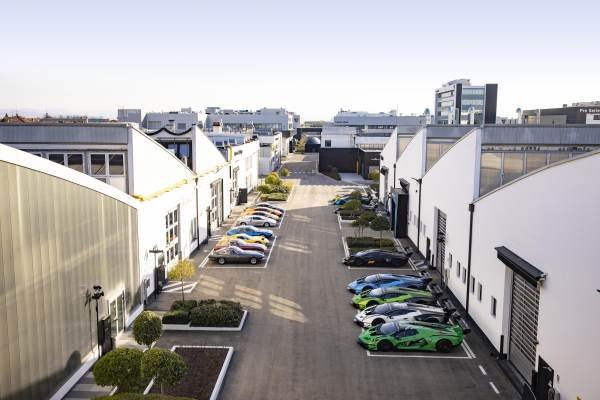Sant’Agata Bolognese 5 มิถุนายน 2025 – ออโตโมบิลิ ลัมโบร์กินี (Automobili Lamborghini) ฉลองครบรอบ 10 ปีของการเดินหน้าสู่ความเป็นกลางทางคาร์บอน (carbon neutrality) แบบสะสมของโรงงานผลิตเมืองซัง’อกาตา โบโลนเญสในปีนี้ ซึ่งแผนการดำเนินงานเพื่อผ่านการรับรองนี้ถือเป็นการตัดสินใจเชิงกลยุทธ์ที่ได้รับการสนับสนุนอย่างแข็งขันจากทุกภาคส่วนในองค์กร และทำให้โรงงานผลิตแห่งนี้กลายเป็นหนึ่งในศูนย์การผลิตแห่งแรกในเครือ Audi Group ที่ผ่านการรับรอง และยังเป็นแห่งแรกของโลกที่ได้รับการรับรอง DNV
มร.สเตฟาน วิงเคิลมันน์ ประธานกรรมการและประธานเจ้าหน้าที่บริหาร ออโตโมบิลิ ลัมโบร์กินี กล่าวว่า “เราได้ตัดสินใจเริ่มต้นเส้นทางที่ท้าทายนี้เมื่อ 10 ปีก่อน เพื่อเปลี่ยน ‘ความยั่งยืน’ ให้กลายเป็นกลยุทธ์หลักของบริษัทในอนคต และวันนี้คือวันแห่งการเฉลิมฉลองความสำเร็จอันยิ่งใหญ่ และเหนือสิ่งอื่นใด ถือเป็นการตอกย้ำถึงพันธกิจของเราในการมุ่งมั่นพัฒนาที่ต่อเนื่อง สามารถวัดผลได้ และสอดคล้องกับคุณค่าของแบรนด์อย่างแท้จริง”
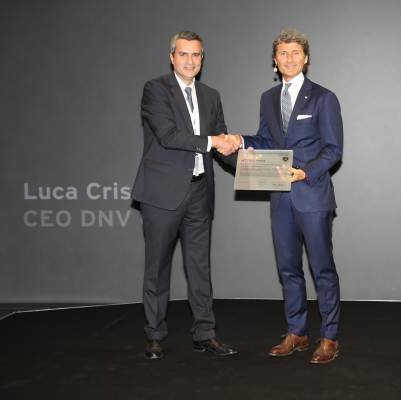
ความเป็นกลางทางคาร์บอนแบบสะสม (On-balance) หมายถึงการที่บริษัทสามารถลดการปล่อยคาร์บอนได้มากที่สุดตามมาตรการที่วางไว้ และทำการชดเชยในส่วนตกค้างและส่วนที่หลีกเลี่ยงไม่ได้ผ่านโครงการลดคาร์บอนต่าง ๆ เพื่อให้ค่าสุทธิเป็นศูนย์ ซึ่งในกรณีของลัมโบร์กินีนั้น โรงงานผลิตเมืองซัง’อกาตา โบโลนเญส สามารถบรรลุเป้าหมายดังกล่าว ผ่านการดำเนินการเพื่อลดการปล่อยคาร์บอนโดยตรง ควบคู่ไปกับการชดเชย ผ่านโครงการที่ดำเนินการทั่วโลก ทั้งนี้ ไม่นับรวมการปล่อยคาร์บอนจากการใช้งานรถยนต์
เส้นทางเพื่อสิ่งแวดล้อมซึ่งเริ่มต้นขึ้นจากการรับรองมาตรฐานโรงงานผลิตเมืองซัง’อกาตา โบโลนเญส ในปี พ.ศ. 2558 ได้รับการสานต่อตลอดหลายปีที่ผ่านมา ด้วยการนำมาตรการด้านประสิทธิภาพพลังงานและนวัตกรรมทางเทคโนโลยีใหม่ ๆ มาใช้ควบคู่ไปกับการชดเชยการปล่อยมลพิษที่เหลืออยู่ซึ่งเป็นส่วนที่หลีกเลี่ยงไม่ได้
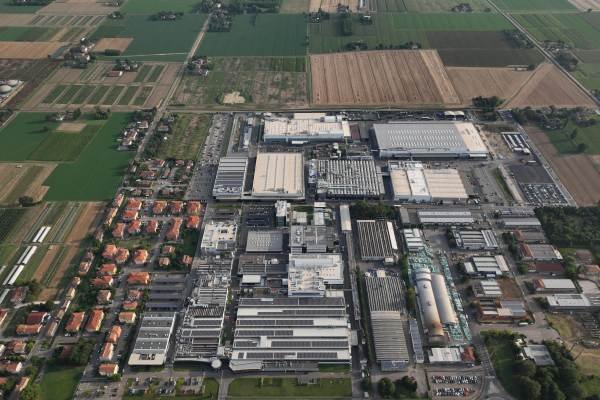
แนวทางแบบบูรณาการ – ลด ก่อน ชดเชย
สำหรับออโตโมบิลิ ลัมโบร์กินี ความเป็นกลางทางคาร์บอนไม่ใช่แค่ชดเชยการปล่อยก๊าซคาร์บอนไดออกไซด์ที่เกิดจากการผลิตเท่านั้น แต่เริ่มจากการสร้างกลยุทธ์ที่เป็นระบบในการเฝ้าระวังและลดการปล่อยคาร์บอนอย่างรัดกุม
ช่วง 10 ปีที่ผ่านมา บริษัทฯ สามารถลดปริมาณการปล่อยคาร์บอนจากโรงงานผลิตได้ถึง 49% เมื่อเปรียบเทียบกับปี พ.ศ. 2557 แม้ว่าขนาดของบริษัทจะใหญ่ขึ้นเป็นสองเท่าก็ตาม โดยใช้กระบวนการ เทคโนโลยี และโครงสร้างพื้นฐาน รวมถึงการดำเนินงานด้านประสิทธิภาพพลังงานอย่างเป็นรูปธรรม หนึ่งในการดำเนินงานครั้งสำคัญคือการติดตั้งระบบโซลาร์เซลล์ในปี พ.ศ. 2553 ซึ่งต่อมาขยายจนครอบคลุมพื้นที่ 15,000 ตารางเมตร และสามารถผลิตพลังงานมากกว่า 2 ล้านกิโลวัตต์ชั่วโมงต่อปีให้แก่โครงข่ายไฟฟ้า และช่วยลดการปล่อยก๊าซคาร์บอนไดออกไซด์ได้ราว 800 ตันต่อปี และในวันนี้ บริษัทฯ กำลังวางแผนขยายระบบโซลาร์เซลล์เพิ่มเติมในพื้นที่คลังสินค้าซึ่งเป็นส่วนหนึ่งของกลยุทธ์การลดคาร์บอน และคาดว่าจะเสร็จสิ้นภายในปี 2568 โดยจะสามารถเพิ่มกำลังการผลิตไฟฟ้าได้อีก 2.89 ล้านกิโลวัตต์ชั่วโมงต่อปี และลดก๊าซคาร์บอนไดออกไซด์ได้อีก 1,200 ตันต่อปี เสริมสร้างการพึ่งพาตนเองด้านพลังงานของโรงงานให้เข้มแข็งมากขึ้น
แม้แต่การออกแบบอาคารของบริษัทก็ได้นำเอาแนวคิดนี้มาใช้แบบบูรณาการ โดยสำนักงานใหญ่ Torre 1963 ซึ่งเปิดตัวในปี พ.ศ. 2560 ได้รับมาตรฐาน LEED Platinum ด้วยคะแนนสูงสุดเป็นประวัติการณ์ของประเทศอิตาลีที่ 92/100
อีกด้านหนึ่ง สำหรับการใช้พลังงานจากก๊าซธรรมชาติ บริษัทฯ ได้ติดตั้งระบบผลิตพลังงานแบบไตรเจนเนอเรชันในปี พ.ศ. 2558 และ 2560 ซึ่งสามารถผลิตพลังงานไฟฟ้า พลังงานความร้อน และพลังงานความเย็นได้ในกระบวนการเดียว ช่วยลดการปล่อยก๊าซคาร์บอนไดออกไซด์ได้ถึง 1,000 ตันต่อปี ลัมโบร์กินียังเป็นผู้ผลิตยานยนต์รายแรกในปะเทศอิตาลี ที่ใช้ระบบทำความร้อนจากก๊าซชีวภาพเมื่อปี พ.ศ. 2558 สามารถผลิตพลังงานความร้อนได้ 3,000 เมกะวัตต์ชั่วโมงต่อปี และลดการปล่อยก๊าซคาร์บอนไดออกไซด์ได้อีก 500 ตัน

ในปี พ.ศ.2565 บริษัทฯ ยังได้จัดตั้งคณะทำงานด้านประสิทธิภาพพลังงาน (Energy Efficiency Task Force) เพื่อเพิ่มประสิทธิภาพในขอบเขตงานที่ใช้พลังงานสูง พร้อมยกระดับประสิทธิภาพโดยรวมของโรงงานผลิตอย่างต่อเนื่อง
รานิเอรี นิคโคลี ประธานเจ้าหน้าที่ฝ่ายการผลิต ออโตโมบิลิ ลัมโบร์กินี กล่าวว่า “โรงงานแห่งนี้คือเครื่องพิสูจน์ที่ชัดเจนว่าความเป็นเลิศด้านการผลิตและความรับผิดชอบต่อสิ่งแวดล้อมสามารถเดินทางควบคู่ไปด้วยกันได้ ทุก ๆ การดำเนินงานของเราสะท้อนถึงวิสัยทัศน์แบบองค์รวมที่ให้ความสำคัญกับประสิทธิภาพ นวัตกรรม และความยั่งยืนเป็นหัวใจหลัก”
ออโตโมบิลิ ลัมโบร์กินี ยังได้นำระบบบริหารจัดการสิ่งแวดล้อมและพลังงานตามมาตรฐานสากล ISO 14001:2015 และ ISO 50001:2018 มาใช้เพิ่มประสิทธิภาพในการใช้ทรัพยากรและลดผลกระทบต่อสิ่งแวดล้อม นอกจากนี้ บริษัทฯ ยังได้รับการรับรองมาตรฐาน EMAS (Eco-Management and Audit Scheme ) ครั้งแรกในปี พ.ศ. 2552 และมีการตรวจวัดการปล่อยคาร์บอนตามมาตรฐาน ISO 14064-1:2018 ซึ่งสะท้อนถึงความมุ่งมั่นในการสื่อสารอย่างโปร่งใสและควบคุมผลกระทบอย่างเคร่งครัดของบริษัทฯ
แนวทางการลดคาร์บอนจึงถูกต่อยอดสู่ทุกขอบเขตการทำงานที่มีการปล่อยคาร์บอน (Scope 1, 2 และ 3 ) ตลอดทั้งห่วงโซ่มูลค่า นอกจากนี้ บริษัทฯ ยังเดินหน้าสู่อนาคตด้วยการกำหนดกลยุทธ์ในแผน “Direzione Cor Tauri” โดยมีเป้าหมายเพื่อการสร้างสมดุลระหว่างความเป็นเลิศด้านวิศวกรรมกับความรับผิดชอบต่อสิ่งแวดล้อม
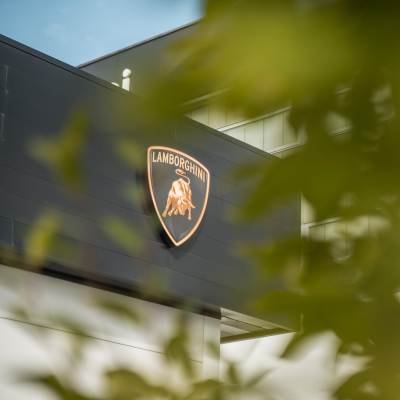
การปล่อยคาร์บอนของโรงงานผลิตและโครงการชดเชยในขอบเขตงาน
ในปี พ.ศ. 2567 ปริมาณการปล่อยก๊าซคาร์บอนไดออกไซด์ของโรงงานผลิต (Scope 1 และ 2) อยู่ที่ 29,849 ตัน ซึ่งลัมโบร์กินีตั้งเป้าหมายที่จะลดลงให้มากที่สุด โดยส่วนที่ยังหลีกเลี่ยงไม่ได้จะถูกชดเชยด้วยคาร์บอนเครดิตที่ผ่านการรับรอง
ออโตโมบิลิ ลัมโบร์กินี เริ่มต้นเส้นทางนี้ในปี พ.ศ. 2558 ด้วยการลงทุนในโครงการที่สร้างผลกระทบเชิงบวกในระดับท้องถิ่น โดยเป็นโครงการที่สามารถสร้างผลประโยชน์ที่เป็นรูปธรรมทั้งในด้านสิ่งแวดล้อมและสำหรับชุมชนที่เกี่ยวข้อง เช่น แผนส่งเสริมการใช้จักรยานในเมืองโบโลญญา และโครงการดักจับคาร์บอนในบริเวณลากูน่าของเวนิส ซึ่งใช้ระบบกรองธรรมชาติจากพืชและความเค็มของน้ำทะเลที่เป็นมิตรต่อสิ่งแวดล้อม เพื่อดูดซับและกักเก็บก๊าซคาร์บอนไดออกไซด์ในบรรยากาศ
นับตั้งแต่ปี พ.ศ. 2565 ลัมโบร์กินีได้คัดเลือกเฉพาะคาร์บอนเครดิตที่ผ่านการรับรองขั้นสูงสุดในระดับสากล เช่น Gold Standard และ Verra ซึ่งให้ความสำคัญกับโครงการผลิตพลังงานหมุนเวียน และสอดคล้องกับค่านิยมของแบรนด์ที่ให้ความสำคัญกับความยั่งยืนที่เป็นรูปธรรมและมีความโปร่งใสอย่างแท้จริง
รายงานความยั่งยืนฉบับแรกกำลังจะเกิดขึ้น
ปี พ.ศ. 2568 ไม่เพียงเป็นวาระครบรอบ 10 ปีบนเส้นทางสู่ความเป็นกลางทางคาร์บอนของโรงงานซัง’อกาตา โบโลนเญสเท่านั้น หากยังเป็นจุดเริ่มต้นของกลยุทธ์ด้านสิ่งแวดล้อม สังคม และธรรมาภิบาล (ESG) ของออโตโมบิลิ ลัมโบร์กินี โดยจะมีการจัดทำรายงานความยั่งยืน (Sustainability Report) ฉบับแรกในประวิติศาสตร์บริษัทฯ
รายงานฉบับนี้ไม่ใช่แค่เอกสารเปิดเผยข้อมูลเท่านั้น แต่ยังเป็นเครื่องมือเพื่อการกำกับดูแลที่ออกแบบมาเพื่อนำเสนอผลลัพธ์ที่เกิดขึ้น แผนงานที่กำลังดำเนินการ และเป้าหมายในอนาคต อย่างเป็นระบบและโปร่งใส รายงานนี้ยังช่วยให้หน่วยงานสามารถรวบรวมการติดตามผลการปฏิบัติงานด้านสิ่งแวดล้อม สังคม และการกำกับดูแลภายในองค์กร และในขณะเดียวกัน ก็ช่วยยกระดับการสื่อสารกับผู้ถือประโยชน์ทุกฝ่ายอีกด้วย
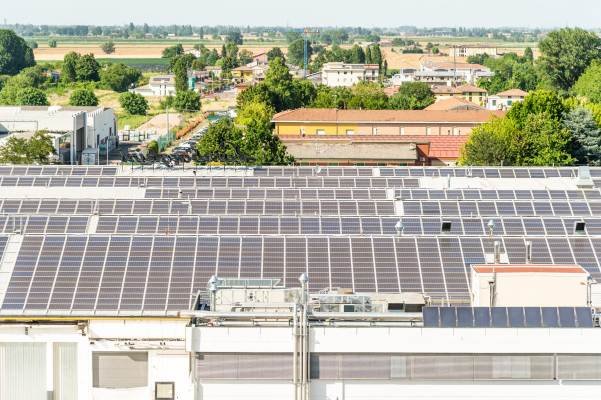
นับตั้งแต่แนวทางการลดคาร์บอน ไปสู่การดูแลสุขภาวะของบุคลากร ตั้งแต่การบริหารทรัพยากรอย่างมีประสิทธิภาพ ไปจนถึงการมีส่วนร่วมกับชุมชนท้องถิ่น รายงานฉบับนี้จะเชื่อมโยงความมุ่งมั่นของลัมโบร์กินีไปสู่การเป็นองค์กรที่มีความรับผิดชอบและความยั่งยืนอย่างแท้จริงในทุกมิติของการดำเนินงาน
[1] การรับรองมาตรฐาน 0001-CNP-2016-DNV
2 สามารถดูตัวเลขและโครงการทั้งหมดที่กล่าวถึงในข้อความนี้ได้จากแถลงการณ์ด้านสิ่งแวดล้อมของออโตโมบิลิ ลัมโบร์กินี (Automobili Lamborghini Environmental Statement)
3 โดยมีการบริโภคไฟฟ้าในตัวเองประมาณ 800,000 กิโลวัตต์ชั่วโมง/ปี
4 เครื่องมืออาสาสมัครที่สร้างขึ้นโดยสหภาพยุโรปซึ่งช่วยให้องค์กรต่าง ๆ สามารถประเมิน จัดการ และปรับปรุงประสิทธิภาพด้านสิ่งแวดล้อมของตนเองได้
5 การปล่อยมลพิษ Scope 1 ประกอบด้วยการปล่อยมลพิษโดยตรงจากแหล่งที่บริษัทเป็นเจ้าของหรือควบคุม ซึ่งรวมถึงพลังงานในสถานที่ เช่น ก๊าซธรรมชาติและเชื้อเพลิง สารหล่อเย็น และการปล่อยมลพิษที่เกิดจากการเผาไหม้ในหม้อไอน้ำ และการปล่อยมลพิษจากยานพาหนะและยานพาหนะของบริษัท (เช่น รถยนต์ รถตู้ และรถบรรทุก) การปล่อยมลพิษ Scope 1 ประกอบด้วยการปล่อยมลพิษจากกระบวนการที่ปล่อยออกมาในระหว่างกระบวนการอุตสาหกรรมและการผลิตในสถานที่ (เช่น ควันจากโรงงาน สารเคมี) การปล่อยมลพิษ Scope 2 ประกอบด้วยการปล่อยก๊าซเรือนกระจกทางอ้อมที่เกิดจากพลังงานที่ซื้อหรือได้มา เช่น ไฟฟ้า ไอ ความร้อนหรือความเย็น ที่ผลิตนอกสถานที่และที่บริษัทใช้ การปล่อยมลพิษ Scope 3 ประกอบด้วยการปล่อยมลพิษทางอ้อมทั้งหมดที่เกิดขึ้นตลอดห่วงโซ่คุณค่าของบริษัท ทั้งต้นน้ำและปลายน้ำ
6 เครดิตคาร์บอนเป็นใบรับรองดิจิทัลที่สามารถซื้อขายได้ โดยแต่ละใบแทนก๊าซคาร์บอนไดออกไซด์หนึ่งตันที่ไม่ถูกปล่อยหรือดูดซับไว้ด้วยโครงการปกป้องสิ่งแวดล้อม ซึ่งดำเนินการด้วยจุดมุ่งหมายเพื่อลดหรือดูดซับก๊าซคาร์บอนไดออกไซด์และก๊าซเรือนกระจกอื่น ๆ ทั่วโลก
7 Verra (Verified Carbon Standard หรือ VCS) และ Gold Standard เป็นมาตรฐานสากลหลักสองมาตรฐานสำหรับการรับรองเครดิตคาร์บอน ซึ่งใช้ในการชดเชยการปล่อยก๊าซคาร์บอนไดออกไซด์
Automobili Lamborghini celebrates ten years of on-balance carbon neutrality for the Sant’Agata Bolognese production site
A decade-long path of industrial evolution and environmental responsibility, from the first photovoltaic system to publication of the first Sustainability Report
Sant’Agata Bolognese : In 2025 Automobili Lamborghini is celebrating ten years since it achieved the on-balance carbon neutrality of its production site. The decision to pursue the carbon neutrality certification was a strategic and proactive one, strongly supported by the entire organisation. This vision made the Sant’Agata Bolognese site one of the first facilities within the Audi Group to be certified, and the first in the world to achieve this recognition from the certification body DNV.
“We decided to undertake a courageous journey ten years ago, and we have turned sustainability into strategic leverage for the company’s future. Today we are celebrating an important goal, and above all we are confirming our commitment to a tangible, measurable evolution consistent with the brand’s values,” stated Stephan Winkelmann, Chairman and CEO of Automobili Lamborghini.
“On-balance” carbon neutrality refers to a condition in which, after having adopted measures to reduce its emissions, a company compensates for the residual and unavoidable ones through offsetting projects so as to arrive at a zero net balance. In this context, Lamborghini achieved the carbon neutrality of its Sant’Agata Bolognese Production Site by combining operations targeted at cutting emissions with voluntary offsetting projects carried out worldwide. In this respect, carbon emissions generated while using the vehicle are excluded.
The path, started in 2015 with the certification of the Sant’Agata Bolognese site, has developed over the years by taking new tangible energy efficiency and technological innovation measures, accompanied by compensating for the residual, unavoidable emissions.
An integrated approach: reduce before compensating
In Automobili Lamborghini’s opinion, being on-balance carbon neutral does not mean simply compensating for the CO₂ emissions generated at its production site but instead, first of all, adopting a systematic strategy to monitor and reduce them.
Thanks to an ongoing and well-organized path, over the last ten years Automobili Lamborghini has reduced the emissions of its production site compared to 2014 by 49%, even though the company has doubled in size. It reached this goal by taking targeted measures on processes, technologies and infrastructure, including many energy efficiency actions. Lamborghini’s commitment is deeply rooted. Already in 2010, the first photovoltaic system was installed, and it was later enlarged to cover a total surface area of 15,000 m², one of the region’s most extensive at the time. The system generates and injects over 2 million kWh a year into the power grid , contributing to the reduction of about 800 tons of CO₂ every year. Today Automobili Lamborghini has planned a further expansion of its photovoltaic system as part of its decarbonization strategy, with work involving the warehouse area to be completed by the end of 2025. The already approved investment will offer an additional production of 2,89 million kWh per year, further contributing to the reduction of CO₂ emissions by 1,200 tonnes annually and strengthening the plant’s energy autonomy.
Attention paid to energy efficiency has also impacted the company’s architecture. Torre 1963, the company’s head offices, was inaugurated in 2017 and was certified LEED Platinum with a score of 92 out of 100, the highest ever achieved in Italy at the time.
With reference to gas consumption, on the other hand, two trigeneration plants able to simultaneously produce electricity, thermal energy and cooling energy starting from a single source (natural gas) went into operation in 2015 and 2017. The environmental statements acknowledge their average annual production of 22,000 MWh, with savings estimated at 1,000 tons of CO₂. Lamborghini also became the first automotive company in Italy to adopt a biogas-fueled district heating system in 2015. It is able to supply 3,000 MWh a year of thermal energy and to reduce another 500 tons of CO₂.
Since 2022, Automobili Lamborghini has strengthened its commitment to improving energy efficiency in high-consumption areas through the work of its Energy Efficiency Task Force, significantly enhancing the overall performance of the production site.
“The Sant’Agata Bolognese facility today is a concrete example of how we can combine first-rate manufacturing and environmental responsibility. Every action is the result of an integrated vision that places efficiency, innovation and sustainability at the heart of our everyday operations,” commented Ranieri Niccoli, Chief Manufacturing Officer of Automobili Lamborghini.
Automobili Lamborghini has implemented environmental and energy management systems compliant with the ISO 14001:2015 and ISO 50001:2018 international standards to support this approach, with the goal of optimizing use of resources and improving performance on an ongoing basis. Moreover, keeping its EMAS (acronym of Eco-Management and Audit Scheme) certification, obtained for the first time in 2009, and monitoring emissions according to the ISO 14064-1:2018 standard confirm the company’s commitment to transparent disclosure and strict control of the generated impacts.
The reduction actions were then systematically extended to all emission categories (Scope 1, 2 and 3 ) along the entire value chain. Automobili Lamborghini is now looking to the future with a clear strategy set out in the Direzione Cor Tauri roadmap, and with the goal of strengthening its sustainable industrial model balanced between engineering excellence and environmental responsibility.
Emissions of the production site and local offsetting initiatives
The emissions of the production site (Scope 1 and 2) in 2024 amounted to 29,849 tons of CO₂, a figure that Automobili Lamborghini has undertaken to reduce as much as possible. The presently residual unavoidable emissions are instead fully compensated for with certified carbon credits.
Automobili Lamborghini started out on this path in 2015 when it chose to invest in concrete initiatives rooted in the local area, initiatives able to generate tangible benefits from both the environmental perspective and for the communities involved. One of these is a mobility plan for cyclists in the Municipality of Bologna, aimed at promoting everyday use of the bicycle as a means of sustainable urban transportation. Another is a carbon capture initiative in the valley of the Venetian lagoon, where eco-friendly filtering systems exploit the combined action of salinity and vegetation to absorb and stockpile atmospheric CO₂.
Since 2022 this approach has been further refined with the company’s decision to select these credits only from among those certified according to the highest international standards, such as the Gold Standard and Verra , favoring projects tied to the production of renewable energy and consistent with the brand’s values and a commitment to concrete and transparent sustainability.
The first Sustainability Report about to arrive
The year 2025 marks not only the tenth anniversary of Sant’Agata Bolognese production site’s carbon neutrality, but a fundamental step taken in the evolution of Automobili Lamborghini’s ESG strategy as well with the publication of the first Sustainability Report in the company’s history.
More than a simple disclosure tool, the Report is an actual governance tool designed to organically and transparently collect the results obtained, the initiatives in progress and future goals. It is a document that will allow the internal environmental, social, and governance performance monitoring to be consolidated while, at the same time, reinforcing communication with stakeholders.
From the decarbonization path to the well-being of people, from efficient management of resources to initiatives in the local area, the Report will clearly, and in a structured manner, relate Automobili Lamborghini’s commitment to an increasingly sustainable and responsible industrial model.
[1] Certificate No: 0001-CNP-2016-DNV
2All of the figures and projects mentioned in this text can be consulted on the Automobili Lamborghini Environmental Statement
Of which approximately 800,000 kWh/year are self-consumed.
3Voluntary tool created by the European Union that allows organizations to evaluate, manage and improve their environmental performance.
4 Scope 1 emissions comprise direct emissions from sources owned or controlled by the company. This includes on-site energy, such as natural gas and fuel, coolants and emissions coming from combustion in boilers, and the emissions of vehicles and company vehicles (such as cars, vans and trucks). Scope 1 emissions comprise process emissions released during industrial processes and on-site production (such as factory fumes, chemical substances).
5 Scope 2 emissions comprise indirect greenhouse gas emissions coming from purchased or acquired energy, such as electricity, steam, heat or cooling, generated off-premises and consumed by the company.
Scope 3 emissions comprise all indirect emissions that are generated along the company’s value chain, both upstream and downstream.
6 Carbon credits are tradeable digital certificates, each of which represents one ton of CO2 not emitted or absorbed thanks to an environmental protection project carried out with the aim of reducing or re-absorbing global CO2 emissions and other greenhouse gases.
7 Verra (Verified Carbon Standard, or VCS) and Gold Standard are two of the main international standards for certification of carbon credits, used for offsetting CO2 emissions.








